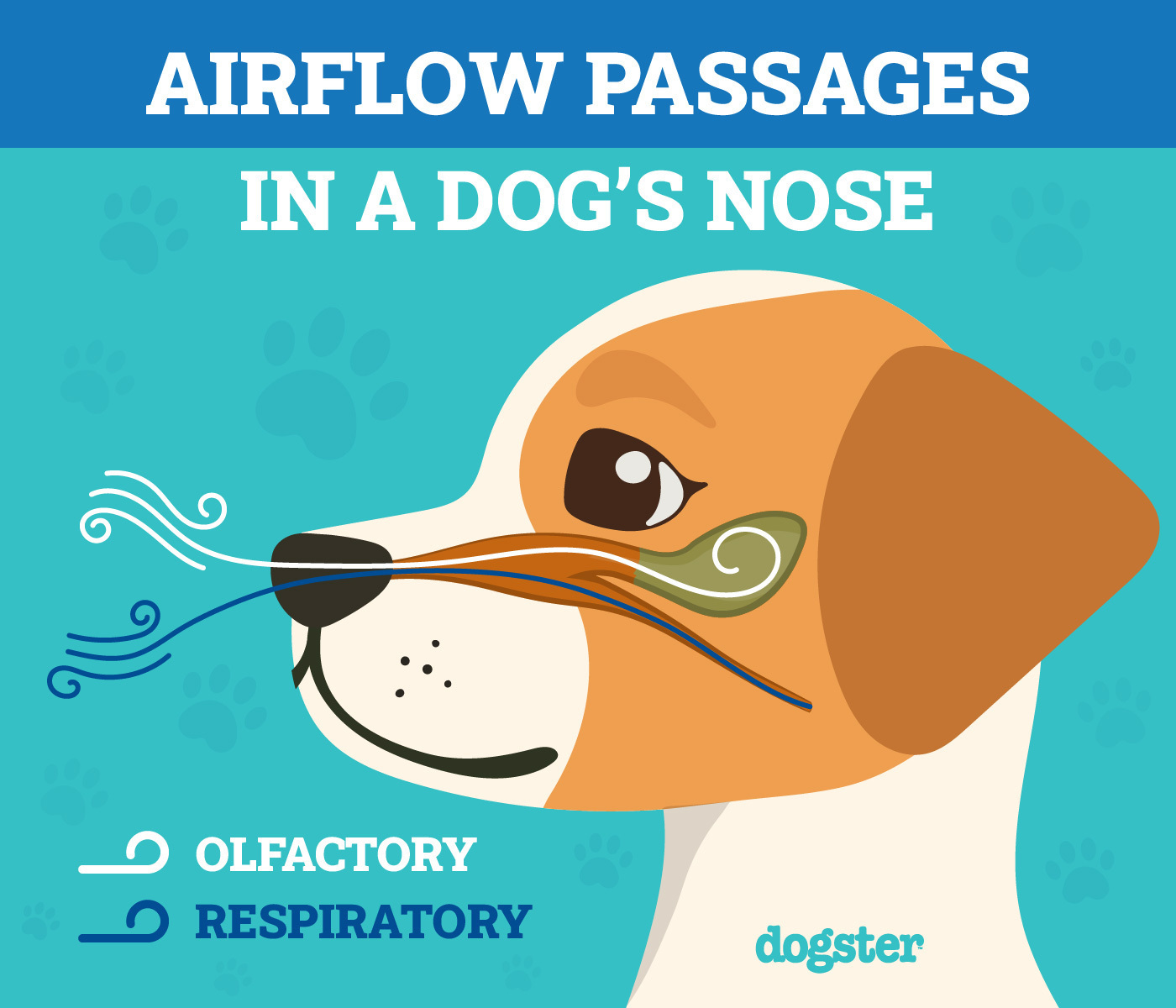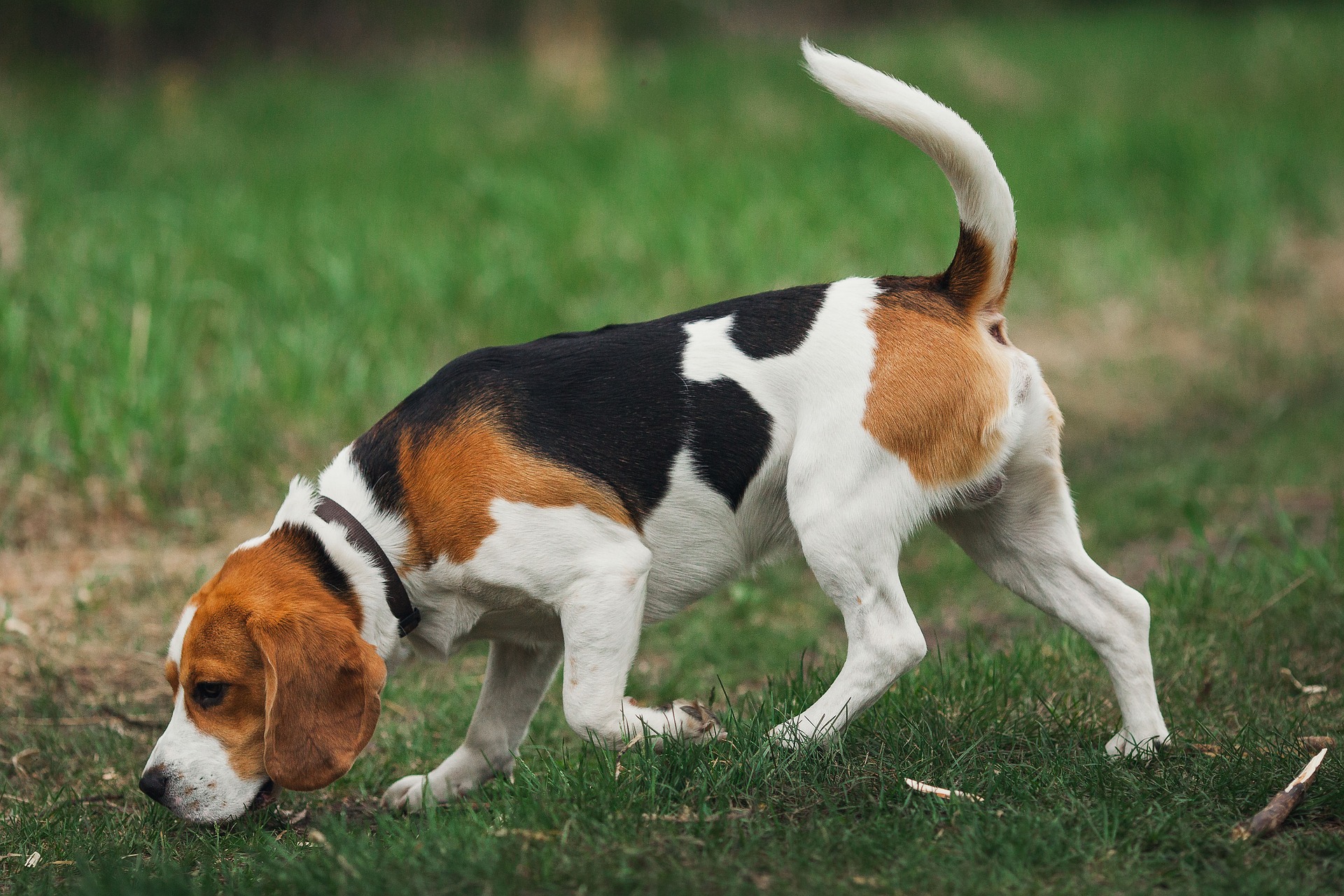Original Article: https://www.dogster.com/lifestyle/can-dogs-smell-other-dogs-on-you
Click to Skip Ahead
You may notice your dog paying closer attention to you after you’ve been around other dogs during the day. Perhaps you made a canine friend on the trail or cuddled a neighbor’s new puppy. If you’re wondering whether your pet knows your secret, the answer is a resounding yes! It’s not surprising, given that research suggests that smell is your dog’s primary sense versus our reliance on vision.
A dog’s sense of smell serves multiple purposes for dogs beyond simple detection and recognition of scents and odors. Their amazing olfactory capabilities allow them to gather information about their environment and is crucial for locating food, danger, and communicating with other dogs. Therefore, it makes evolutionary sense for your dog to get as much information as possible if you’ve been around another pooch.


Canine vs. Human Olfaction
Outlining the differences between canine and human olfaction can shed light on why your pet detects other dogs on your person. Dogs have roughly 100 million sensory receptors compared to a human’s 6 million. This figure can vary with the breed since the amount of surface area within the organ is also a part of the equation. However, dogs have us beat on this score.
The way odor molecules move through the nose is another determining factor of olfactory acuity. Canines also rule on that aspect. When dogs sniff, the inhaled air in their nostrils separates into two distinct pathways, some of each breath goes straight to the olfactory region and the rest flows down the pharynx into the lung.
Dogs have a second site for analyzing body scents from other dogs called the vomeronasal or Jacobson’s organ. This is an area in the roof of the mouth which detects pheromones. It enhances their sense of smell and allows them to assess and interpret social and reproductive cues from other dogs.

The Importance of Canine Olfactory Communication
Scents for people are probably just good, neutral, or bad on varying scales. We associate memories with some smells, such as your grandma’s home cooking or a new car. Our pets also have the ability to distinguish what they perceive as either familiar or unfamiliar. One study examined the different physiological responses to body odors or chemosignals associated with fear, happiness, and control.1
The canine participants accurately identified each one with the expected outcome. Furthermore, the researchers observed higher heart rates in the dogs in fear conditions. Detecting and reacting correctly to various situations can affect survival.
When you interact with another pet, your pup will try to determine if it’s a threat by sniffing you. Your dog may be able to learn the reproductive status, health, and even the food the pooch consumes by giving you the once-over with this instinctive action. The chemical world of dogs is far vaster than we can comprehend. Your pet may not see the other animal, but they can learn a lot about them.
Puppies are born unable to see or hear, and olfaction is their major sense for the first few weeks of their life.2 Interestingly, research suggests that domestication has reduced our pets’ olfactory capacity, even in scent breeds.3 After all, thanks to humans, dogs don’t need smell for survival as much as in the past.
Nevertheless, your dog still has the instinct to recognize something unfamiliar when they detect different smells on you. Your pet sniffing you is their way of scoping out the situation. Perhaps every canine companion realizes their owners and homes are the modern-day equivalents of their territories.
Scent Marking
Survival underscores other ways dogs use olfaction. It comes into play when scent marking. This action sends a chemical signal to other canines that a space is occupied. It can prevent potentially life-threatening conflicts. This conclusion is valid based on research showing small pups scent mark more frequently than large canines, presumably because direction interactions and confrontations are riskier for them.4

Courtship and Mating
Dogs also use olfaction during courtship. They use the Jacobsen’s organ to help them distinguish pheromones, which can affect canine behavior. Pheromones signal whether the dogs are ready to mate. The Jacobsen’s organ also allows puppies to identify their mothers, giving olfaction another survival function.
In most studies sex and neutering does not seem to affect olfactory performance, but interestingly some research indicated a difference. A 2020 study noted that intact male and female German Shepherds were significantly better at narcotics detections than neutered or spayed pups.5 That may explain one reason your pet isn’t overly excited if you’ve been around other canines. Olfaction perhaps isn’t as vital.
Other Functions
Your dog can detect other smells when you interact with pets, such as the scent of grooming products on the other animal. Surprisingly, dogs have scent preferences. Scientists have discovered that our canine companions have a sweet spot for smells like lavender, rose, and blueberry.6 Your pooch may sniff you just to get a whiff of something they find pleasant from your interaction.



Reactions to Your Encounter With Another Dog
Some pets react quickly and anxiously when faced with this situation. You may notice your pet jumping up on you when they usually don’t. You may see their whiskers going a million miles per hour in rhythm with their sniffing. Your pooch may be excited or may appear anxious after the inspection. It all depends on what your dog is detecting from the unfamiliar scents.
Your dog’s quick reaction may surprise you. However, the canine sense of smell is much better than you realize until it’s put into action. Dogs have two main ways to track things: They can put their nose to the ground and sniff for whatever they want to find, or they can also raise their heads to detect airborne scents.
One small study examined how long it took dogs to pick up a scent and follow it. The researchers found that it took only 1 to 2 seconds or five footsteps for the animals to detect where to locate their owners. Of course, many factors affect how quickly your pet catches the scent of another dog. However, some accounts report canines picking up a smell 12 miles away! The takeaway is that your pooch definitively knows when you’ve been around other dogs.


Final Thoughts
When you consider how well your dog can smell, canine olfaction almost seems like a superpower. If you think you’re getting away with something, think again. Your dog knows you’ve petted another canine, and they know it soon after you’ve walked in the door. Olfaction may not have the same survival value for our domesticated pets, but the instincts are still there, affecting your pet’s behavior.
Featured Image Credit: Prostock-studio, Shutterstock
Source: Dogster












